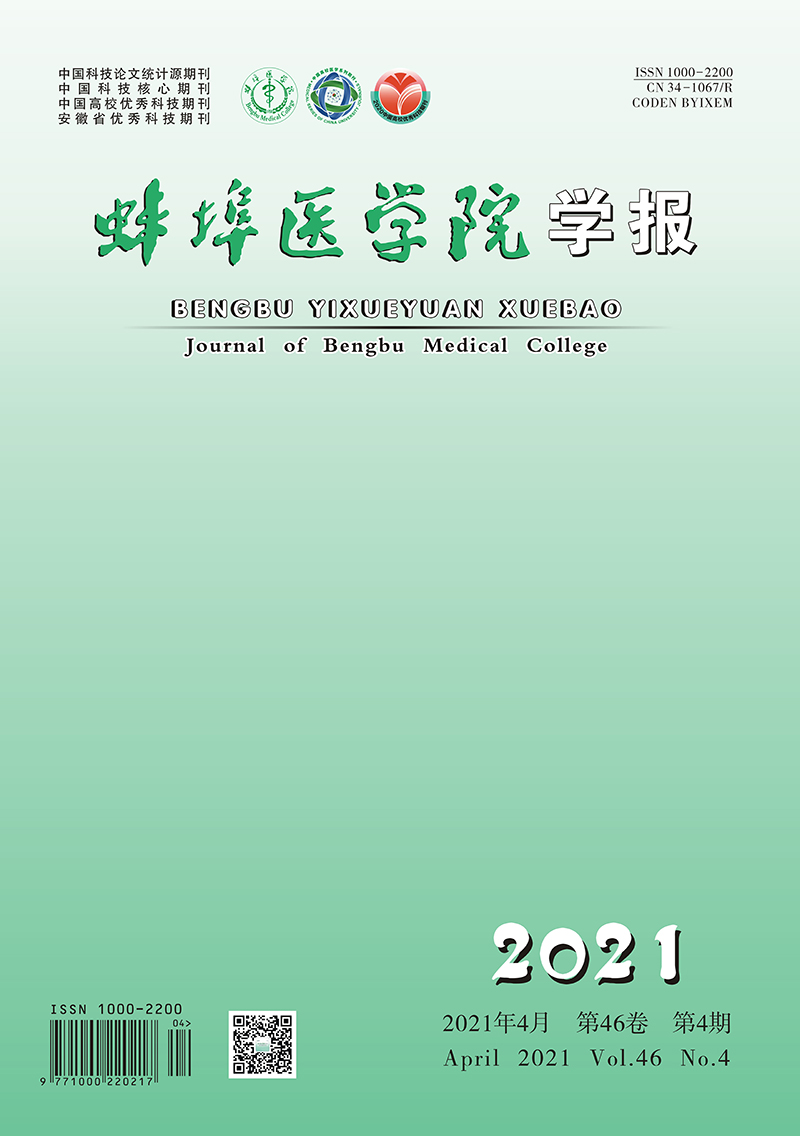-
肺鳞癌是非小细胞肺癌中较常见的类型,约占40%,男性多见,与吸烟有密切关系。多发生在肺段支气管以上,以中央型多见,确诊时多属于中晚期,失去手术机会[1]。与其他类型肺癌相比,晚期肺鳞癌的治疗方法十分有限,以铂类为基础的化疗和放疗仍然是晚期肺鳞癌的主要治疗手段之一,但其疗效不容乐观。相较于其他非铂类药物,国内一般认为吉西他滨对肺鳞癌治疗效果较好,且不良反应较低,适用于大多数病人;奈达铂是二代铂类制剂,于1988年合成并投入临床试验。奈达铂可能是顺铂的优良替代品, 随后的研究[1]表明,奈达铂类药物对肺鳞状细胞癌有良好的疗效。2018年中国临床肿瘤学会(Chinese Society of Clinical Oncology,CSCO)指南首次将奈达铂用于肺鳞癌化疗,并作为Ⅰ级推荐。因此,本研究对晚期肺鳞癌病人采用吉西他滨联合奈达铂进行治疗,并与吉西他滨联合顺铂治疗的对照组进行比较,评估其短期疗效、不良反应及对凝血功能的影响,为临床上进一步优化晚期肺鳞癌的化疗方案提供参考。
HTML
-
收集2018年9月至2019年9月于我科住院治疗的晚期肺鳞癌病人病例资料。纳入标准:(1)病人均经我院病理科首次确诊为肺鳞癌,且经基线评估为中晚期鳞癌,无手术指征; (2)预计生存期>3个月,PS评分0~1分; (3)有可评估病灶,经胸腹部CT平扫+增强、脑部核磁共振平扫+增强、全身骨扫描或PET-CT等影像学检查,TNM分期为ⅢB~Ⅳ期;(4)病人用药前心电图、血常规、肝肾功能检查基本正常,无药物过敏史;(5)病人及家属了解本次研究目的,自愿参与本次研究,并签署知情同意书。排除标准:(1)化疗期间免疫抑制治疗等其他方法治疗者;(2)临床资料缺失或不全的病人;(3)研究中途失访的病人;(4)合并有其他器官、系统恶性肿瘤;(5)不愿参与本次研究者。共纳入80例,按照随机数字表法分为观察组和对照组,各40例。观察组采用吉西他滨联合奈达铂进行治疗,对照组采用吉西他滨联合顺铂治疗,共2个周期。2组病人在性别、年龄、临床分期、分化程度、KPS评分、吸烟指数、血常规[血红蛋白(Hb)、白细胞计数(WBC)、中性粒细胞(NC)及血小板计数(PLT)]、D-二聚体及合并症方面差异均无统计学意义(P>0.05)(见表 1),具有可比性。
分组 n 男 女 年龄/岁 临床分期 分化程度 KPS评分/分 吸烟指数 ⅢB期 Ⅳ期 Ⅰ~Ⅱ级 Ⅲ~Ⅳ级 观察组 40 35 5 65.10±7.91 17 23 6 34 82.25±6.20 582.50±443.70 对照组 40 39 1 63.40±9.83 21 19 4 36 82.00±7.23 645.00±488.30 χ2 — 1.62* 0.85 0.80 0.46 0.17△ 0.60△ P — >0.05 >0.05 >0.05 >0.05 >0.05 >0.05 分组 n 血常规 D-二聚体/
(mg/L)合并症个数 Hb/(g/L) WBC/(109/L) NC/(109/L) PLT/(109/L) 0 1 ≥2 观察组 40 127.85±15.72 7.34±2.41 4.70±2.24 256.65±84.07 0.77±0.64 19 17 4 对照组 40 133.23±13.97 7.72±2.64 5.29±2.44 235.23±78.89 0.78±0.91 26 11 3 χ2 — 1.63△ 0.66△ 1.13△ 1.18△ 0.03△ 2.52 P — >0.05 >0.05 >0.05 >0.05 >0.05 >0.05 *示校正χ2值; △示t值 -
用药前常规行心电图、肝肾功能、血和尿常规检查,用药后予以血常规检查,所有检查结果无化疗禁忌。观察组采用吉西他滨联合奈达铂进行治疗,吉他西滨(江苏豪森药业生产)1 000 mg/m2+0.9%氯化钠溶液(NS) 100 mL,静脉滴注,30 min滴完,第1、8天;奈达铂(江苏奥赛康药业生产) 80 mg/m2+NS 5 000 mL,静脉滴注,滴注时间不少于1 h,第1天。对照组采用吉西他滨联合顺铂治疗,吉西他滨用法同前;顺铂(江苏豪森药业生产) 80 mg/m2+NS 250 mL静脉滴注,滴注时间不少于2 h,第1、2天。化疗过程中常规给予格拉司琼等5-HT3受体拮抗剂、质子泵抑制剂及糖皮质激素等。每3周为1疗程,连续使用2个疗程后进行疗效评价。
-
按实体瘤疗效判定标准RESIST1.1版评定,分为完全缓解(complete remission,CR)、部分缓解(partialremission,PR)、稳定(stable disease,SD)和进展(progressive disease,PD),并对客观缓解率(objective response rate,ORR),疾病控制率(disease control rate,DCR)进行比较。ORR(%)=(CR+PR)/总例数×100%;DCR(%)=(CR+PR+SD)/总例数×100%。
-
对所有病人在治疗期间的不良反应进行评估。主要分为血液系统毒性:对白细胞毒性作用、对红细胞毒性作用、对血小板毒性作用;非血液系统毒性:胃肠道反应如恶心呕吐、肝功能损害等。评判标准参照1981年WHO抗癌药物毒性反应分度标准分为0~Ⅳ级。
-
采用χ2检验、t检验和秩和检验。
1.1. 一般资料
1.2. 治疗方法
1.3. 疗效评价
1.4. 不良反应评估
1.5. 统计学方法
-
2.1 2组病人近期疗效比较
观察组的ORR和DCR分别为22.5%和85.0%,对照组的ORR和DCR分别为12.5%和65.0%,2组近期疗效比较,差异有统计学意义(P < 0.05)(见表 2)。
分组 n CR PR SD PD uc P 观察组 40 0 9 25 6 对照组 40 0 5 21 14 2.08 < 0.05 合计 80 0 14 46 20 -
2组病人在血液学毒
性方面,无论是WBC、NC还是Hb、PLT化疗前后比较,差异均无统计学意义(P>0.05)(见表 3)。
分组 n WBC NC Hb PLT 0 Ⅰ Ⅱ Ⅲ Ⅳ 0 Ⅰ Ⅱ Ⅲ Ⅳ 0 Ⅰ Ⅰ Ⅲ Ⅳ 0 Ⅰ Ⅱ Ⅲ Ⅳ 观察组 40 22 12 5 1 0 29 5 4 2 0 28 7 4 1 0 37 0 1 1 1 对照组 40 26 8 4 2 0 26 6 5 2 1 25 9 5 1 0 35 2 1 1 1 χ2 — 1.58 1.37 0.53 2.06 P — >0.05 >0.05 >0.05 >0.05 -
2组病人在非血液学毒性方面,无论是胃肠道反应(恶心、呕吐等)还是肝功能损害化疗前后比较,差异均无统计学意义(P>0.05)(见表 4)。
分组 n 胃肠道反应(恶心、呕吐等) 肝功能损害 Ⅰ~Ⅱ Ⅲ~Ⅳ Ⅰ~Ⅱ Ⅲ~Ⅳ 观察组 40 6(15.0) 2(5.0) 2(5.0) 0(0.0) 对照组 40 9(22.5) 3(7.5) 3(7.5) 1(2.5) χ2 — 1.07 0.18 P — >0.05 >0.05 -
2组病人化疗后D-二聚体均较化疗前升高,但观察组增高更明显,但2组比较差异无统计学意义(P>0.05)(见表 5)。
分组 n 化疗前 化疗后 t P 观察组 40 0.77±0.64 1.12±0.98 1.89 >0.05 对照组 40 0.78±0.91 1.08±0.88 1.50 >0.05 t — 0.06* 0.19 — — P — >0.05 >0.05 — — *示t′值
2.2. 2组病人不良反应比较
2.2.1. 血液系统毒性比较
2.2.2. 非血液系统毒性比较
2.3. 对D-二聚体影响
-
肺鳞癌是非小细胞肺癌中一大类,其特点是细胞生长缓慢,转移发生较晚,相对于肺腺癌而言,肺鳞癌基因突变率较低,靶向治疗的选择机会非常有限,CSCO指南推荐的二代EGFR-TKI阿法替尼,其生存期也仅较化疗延长3个月左右。因此含铂两药化疗和放疗仍是晚期鳞癌治疗的重要方法。
铂类化疗药物中以顺铂最为常用,顺铂属于周期非特异性药物,顺铂作为一种DNA交联剂,在许多实体肿瘤中具有显著的活性。顺铂细胞毒性的生化机制包括药物与DNA和非DNA靶标的结合,能与DNA上的嘌呤、嘧啶连接,抑制DNA复制,破坏DNA的结构与功能,随后肿瘤细胞通过凋亡、坏死或两者同时发生而死亡[2-3]。但由于顺铂的消化道反应和肾毒性限制了其临床应用。奈达铂是顺铂的衍生物,其与顺铂结构相似,是第二代铂类化合物,具有轻微的肾毒性和神经毒性[1],对非小细胞肺癌的治疗作用与顺铂相似。
吉西他滨是一种脱氧胞苷类似物,为细胞周期特异性抗肿瘤药物,作为一种核糖核苷酸还原酶抑制酶的替代物,通过破坏细胞复制起到抗癌作用的二氟核苷类药物,属于第3代细胞周期特异性抗肿瘤药物,毒性相对较低,具有独特的作用机制。由于其亲水性,吉西他滨不通过扩散穿过细胞膜,主要通过人类平衡核苷转运蛋白1进入细胞。在细胞摄取后,吉西他滨需要细胞内磷酸化来产生活性二磷酸和三磷酸,它们分别通过抑制核糖核酸还原酶和DNA合成来发挥作用[5]。在一线治疗中,它可以达到30%~77%的有效率[4]。吉西他滨可能是与其他细胞毒性药物,特别是那些引起DNA损伤的药物结合的良好候选药物。在一些Ⅱ期临床试验中,吉西他滨联合应用提高了目标缓解分级和总体中位生存。临床上用于治疗非小细胞肺癌、晚期胰腺癌、和乳腺癌等[5]。
经查阅文献,在体外,奈达铂显示了与顺铂相对于肺癌细胞系的等效抗肿瘤活性。在H460或MA44细胞系的非小细胞肺癌的小鼠中,吉西他滨联合奈达铂对肿瘤生长的抑制作用明显大于单用吉西他滨或奈达铂单独治疗。在另一个临床前模型中,奈达铂和吉西他滨的联合作用表明这两种药物是协同作用的[6]。
基于以上药物特点,结合CSCO指南推荐,本研究观察组采用吉西他滨联合奈达铂进行治疗,对照组采用吉西他滨联合顺铂治疗,共2个周期。结果显示:近期疗效方面,观察组和对照组的ORR分别为22.5%和12.5%,DCR分别为85.0%和65.0%,差异有统计学意义(P < 0.05);这与张晶等[7]的结果相似,但低于周宇等[8]的结果。研究[9]表明奈达铂的抗肿瘤活性可能由与p53相关的早期凋亡机制介导的,在NSCLC细胞系中,奈达铂通过Nrf 2(核因子,红血球样2)信号转导后活性小于顺铂。在鳞状细胞中,NRF2的过度活化比非鳞状细胞肺癌更频繁,NRF2参与耐药及激酶靶向治疗,目前的研究[10]证实以奈达铂为基础的治疗方案对鳞状细胞抗肿瘤活性优于肺腺癌,给药奈达铂后,鳞状细胞肺癌病人的铂原子浓度高于腺癌病人。这种差异可能是奈达铂对鳞状细胞肺癌疗效优越的原因之一[1]。本研究含铂双药化疗有效率较低,可能是由于病例数少的缘故。
2组病人在血液学毒性方面,无论是WBC、NC还是Hb、PLT化疗前后均无统计学意义(P>0.05);对照组40例中6例(15%),观察组40例中8例(20%)需要减少剂量。WBC、NC下降病人经给予粒细胞刺激因子3 d后,均可达到正常范围,Ⅲ~Ⅳ红细胞毒性、血小板毒性,经输注红细胞、血小板均可达到正常范围,导致停止研究药物的不良事件并没有发生。这与袁学东等[4]研究奈达铂联合吉西他滨治疗晚期肺鳞癌血液毒性结果一致。SCAGLIOTTI等[10]研究含铂双药致NC减少27%,贫血10%,PLT减少13%,本研究与之相近。
另外,2组病人在非血液学毒性方面,包括胃肠道反应(恶心、呕吐等)、肝功能损害等化疗前后差异均无统计学意义(P>0.05);这与陈永倖等[11]研究结果一致。对照组发生Ⅲ~Ⅳ胃肠道反应和肝功能损害有2例和观察组有4例需要减少剂量,但经过加强护胃、保肝等药物治疗后,病人胃肠道反应及肝功能可有明显好转,本研究目前未发生因不良事件停止化疗病例。
2组病人化疗后D-二聚体均较化疗前升高,观察组增高更明显,但2组比较差异均无统计学意义(P>0.05)。有研究[12]表明D-二聚体升高与肺栓塞相关。肺栓塞病人伴有D-二聚体升高,因为D-二聚体是血栓形成后降解的一种产物,但是D-二聚体升高不一定有肺栓塞发生,有报道[13]说肺鳞癌病人D-二聚体增高说明机体内发生了纤溶以维持血管壁正常通透性。肺鳞癌病人肺部组织需要修复,也可使纤溶系统发生调动,从而使D-二聚体升高,D-二聚体数值梯度可反映肺鳞癌病人发生纤溶的不同程度,是判断病人预后的最好指标,D-二聚体降低可能提示肺癌预后良好,没有发生肺栓塞的风险,但是尚未有D-二聚体升高提示肺癌预后差的研究[14-15],目前研究D-二聚体升高,提示与肺栓塞相关,但是本研究未发现合并有肺栓塞病人。D-二聚体升高可能与疾病本身发展有关,与肺鳞癌预后的关系有待进一步的多中心大样本数据研究验证。
综上所述,吉西他滨联合奈达铂用于晚期肺鳞癌病人较吉西他滨联合顺铂短期疗效好,不良反应及对D-二聚体影响小,值得临床进一步推广应用。






 DownLoad:
DownLoad: